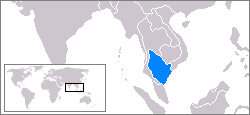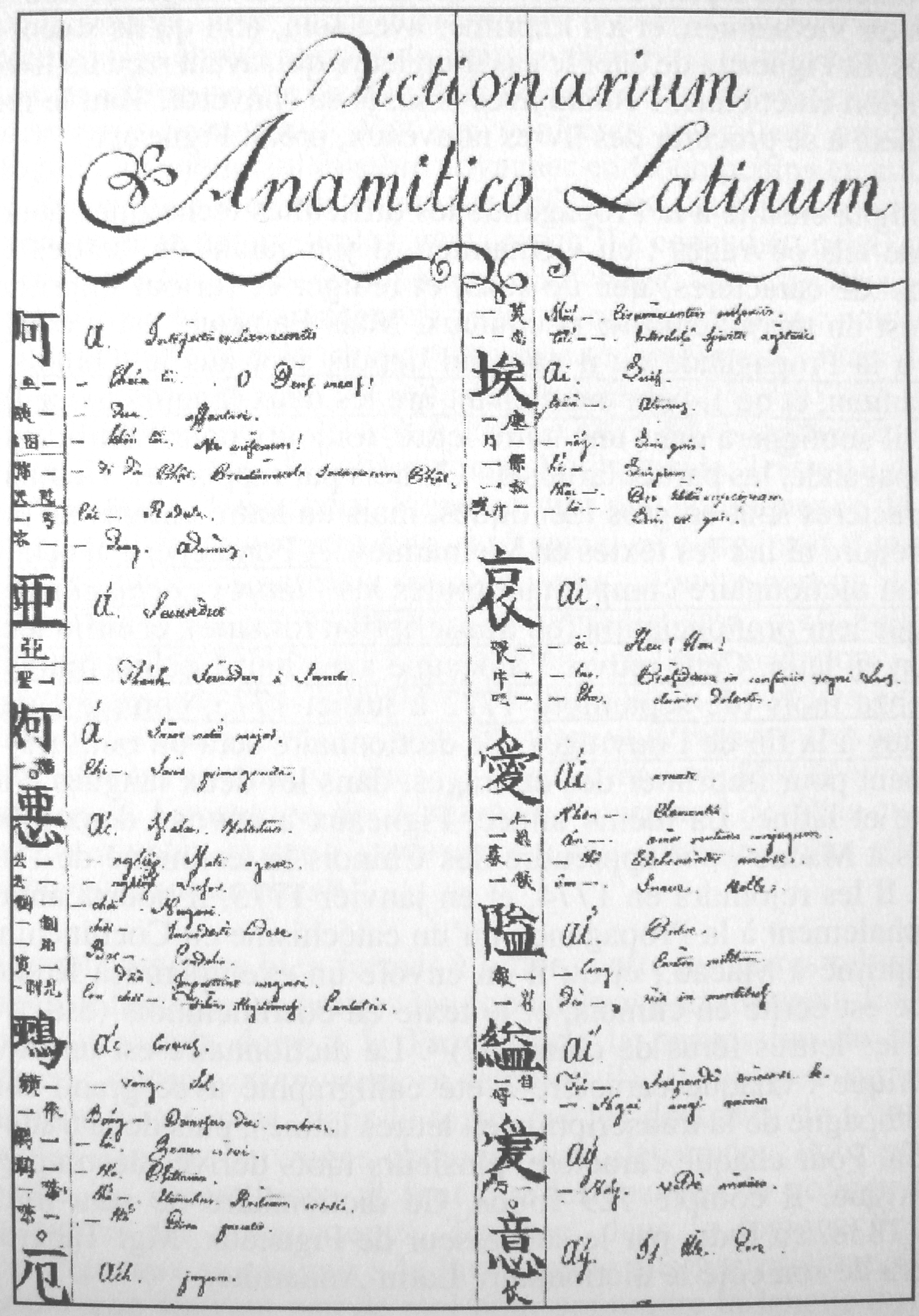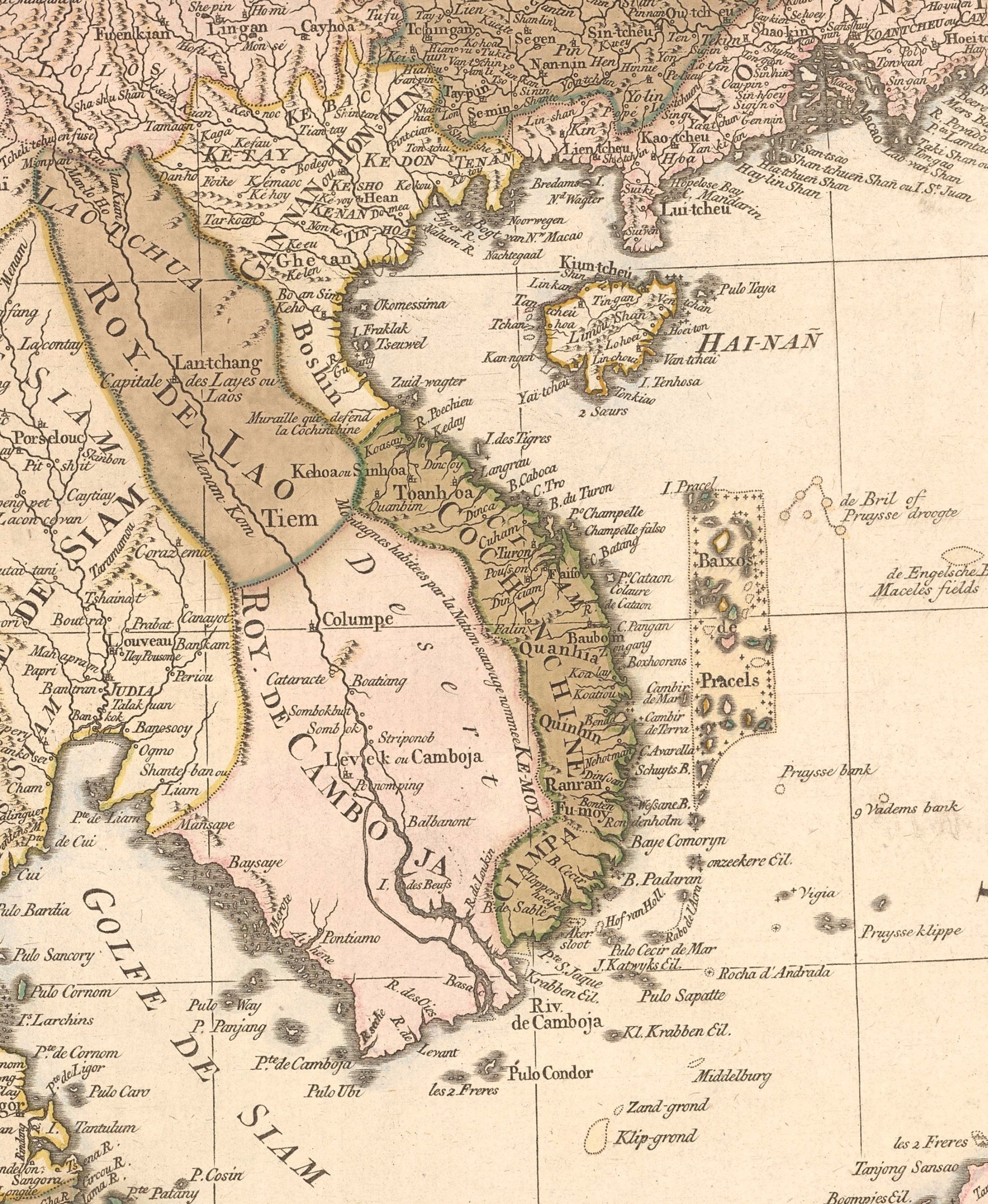|
Nguyễn Phúc Ánh
Gia Long ( (''North''), (''South''); 8 February 1762 – 3 February 1820), born Nguyễn Phúc Ánh (阮福暎) or Nguyễn Ánh, was the founding emperor of the Nguyễn dynasty, the last dynasty of Vietnam. His dynasty would rule the unified territories that constitute modern-day Vietnam until 1945. A nephew of the last Nguyễn lord who ruled over south Vietnam, Nguyễn Ánh was forced into hiding in 1777 as a fifteen-year-old when his family was slain in the Tây Sơn revolt. After several changes of fortune in which his loyalists regained and again lost Saigon, he befriended the French Catholic Bishop Pierre Pigneau de Behaine. Pigneau championed his cause to the French government and managed to recruit volunteers when that fell through to help Nguyễn Ánh regain the throne. From 1789, Nguyễn Ánh was once again in the ascendancy and began his northward march to defeat the Tây Sơn, reaching the border with China by 1802, which had previously been under the cont ... [...More Info...] [...Related Items...] OR: [Wikipedia] [Google] [Baidu] |
Nguyễn Phúc Luân
Nguyễn Phúc Luân or Nguyễn Phúc Côn (wikt:阮, 阮wikt:福, 福wikt:㫻, 㫻, 24 October 1733– 30 January 1765) was a son of Nguyễn Lords, lord Nguyễn Phúc Khoát and father of Nguyễn Phúc Ánh (future emperor Gia Long of Vietnam). Life Luan was the second son of lord Nguyễn Phúc Khoát and he was the prince who would succeed the throne. After lord Khoat's death, an overpowered mandarin named Trương Phúc Loan changed lord Khoat's will to make Luan's younger brother Nguyễn Phúc Thuần to succeed the throne. Later, Trương Phúc Loan imprisoned Luan until his death in 1765. Luan was buried at Cơ Thánh Tomb, located at Cư Chánh, Hưng Thuỷ, Thừa Thiên Huế. Later, his son Nguyễn Phúc Ánh posthumously gave him the title ''Nhân Minh Cẩn Hậu Khoan Dụ Ôn Hòa Hiếu Khang Hoàng Đế'' (仁明謹厚寬裕溫和孝康皇帝). Family Nguyễn Phúc Luân had three wives: Nguyễn Thị Hoàn - mother of Đồng, Ánh (Gia Long), Đi� ... [...More Info...] [...Related Items...] OR: [Wikipedia] [Google] [Baidu] |
Lê Hiển Tông
Lê Hiển Tông (黎顯宗 20 May 1717 – 10 August 1786), born Lê Duy Diêu, was the penultimate emperor of Vietnamese Lê Dynasty. He reigned from 1740 to 1786 and was succeeded by his grandson Lê Duy Kỳ.Nguyên Thi Minh Hà, Nguyên Thi Thanh Bình – ''Vietnamese feminist poems from antiquity to the present'' 2007 Page 81 "King Lẽ Hiển Tông (life: 1716–86; reign: 1740–86) married off his youngest daughter, Princess Lê Ngọc Hân (1770–1799), to Nguyễn Huệ (life: 1753–1792; reign: 1788–1792), leader of the .." At the time Vietnam was under the power of the Trịnh lords. During the reigns of Lê Thuần Tông (1732–35) and Lê Ý Tông (1735–40), Trịnh Giang ruled Vietnam with the title Uy Nam Vương, but he was deposed in 1740 due to poor leadership. From 1740 to 1767, Trịnh Doanh ruled with the title Minh Do Vương in the first part of the reign of Lê Hiển Tông. He was followed by Trịnh Sâm, who ruled from 1767 to 1782 with the ... [...More Info...] [...Related Items...] OR: [Wikipedia] [Google] [Baidu] |
Gulf Of Siam
The Gulf of Thailand, also known as the Gulf of Siam, is a shallow inlet in the southwestern South China Sea, bounded between the southwestern shores of the Indochinese Peninsula and the northern half of the Malay Peninsula. It is around in length and up to in width, and has a surface area of . The gulf is surrounded on the north, west and southwest by the coastlines of Thailand (hence the name), on the northeast by Cambodia and the Mekong Delta region of Vietnam, and opens to the South China Sea in the southeast. Names The modern Thai name of the gulf is ''Ao Thai'' ( th, อ่าวไทย, , 'Thai Gulf') and "Gulf of Thailand" has been adopted as the official name of the body by the International Hydrographic Organization. Its name in Malay is he "Gulf of Siam", ''Teluk Siam'', and in km, ឈូងសមុទ្រសៀម'', Chhoung Samut Siem''. In Thai, the gulf is historically known as ''Ao Sayam'' ( th, อ่าวสยาม). In Vietnamese it is known as ... [...More Info...] [...Related Items...] OR: [Wikipedia] [Google] [Baidu] |
Trịnh Lords
The Trịnh lords ( vi, Chúa Trịnh; Chữ Nôm: 主鄭; 1545–1787), formal title Trịnh Viceroy (; ), also known as Trịnh clan (鄭氏, ''Trịnh thị'') or the House of Trịnh, were a noble feudal clan who de facto ruled Northern Vietnam as known as Tonkin by foreigners during the Later Lê dynasty, Đại Việt. The Trịnh clan and their rivals, the Nguyễn clan, were both referred by their subjects as "Chúa" (lord) and controlled Đại Việt while the Later Lê emperors were reduced to only a titular position. The Trịnh lords traced their descent from Trịnh Khả, a friend and advisor to the 15th-century Vietnamese Emperor Lê Lợi. The Trịnh clan produced 12 lords who dominated the royal court of Later Lê dynasty and ruled northern Vietnam for more than 2 centuries. Origin of Trịnh clan Rise of Trịnh family After the death of emperor Lê Hiến Tông in 1504, the Lê dynasty began to decline. In 1527, the courtier Mạc Đăng Dung gained the ... [...More Info...] [...Related Items...] OR: [Wikipedia] [Google] [Baidu] |
Pierre Pigneau De Behaine
Pierre Joseph Georges Pigneau (2 November 1741 in Origny-en-Thiérache – 9 October 1799, in Qui Nhơn), commonly known as Pigneau de Béhaine (), also Pierre Pigneaux, Bá Đa Lộc ("Pedro" 百 多 祿), Bách Đa Lộc ( 伯 多 祿) and Bi Nhu ("Pigneau" 悲 柔), was a French Catholic priest best known for his role in assisting Nguyễn Ánh (later Emperor Gia Long) to establish the Nguyễn dynasty in Vietnam after the Tây Sơn rebellion. Early life Pierre Pigneau was born in Origny-en-Thiérache (later Aisne, France), where the family of his mother lived. His father's family owned a small estate named Béhaine, in the nearby parish of Marle. Despite the ''particule'' "de Béhaine" in his name, Pigneau was not of noble extraction, and it seems the ''particule'' first appeared only in the 1787 Treaty of Versailles. Pigneau de Behaine was trained as a missionary and sent abroad by the Paris Foreign Missions Society (''Séminaire des Missions Étrangères''). He le ... [...More Info...] [...Related Items...] OR: [Wikipedia] [Google] [Baidu] |
Catholic Church
The Catholic Church, also known as the Roman Catholic Church, is the largest Christian church, with 1.3 billion baptized Catholics worldwide . It is among the world's oldest and largest international institutions, and has played a prominent role in the history and development of Western civilization.O'Collins, p. v (preface). The church consists of 24 ''sui iuris'' churches, including the Latin Church and 23 Eastern Catholic Churches, which comprise almost 3,500 dioceses and eparchies located around the world. The pope, who is the bishop of Rome, is the chief pastor of the church. The bishopric of Rome, known as the Holy See, is the central governing authority of the church. The administrative body of the Holy See, the Roman Curia, has its principal offices in Vatican City, a small enclave of the Italian city of Rome, of which the pope is head of state. The core beliefs of Catholicism are found in the Nicene Creed. The Catholic Church teaches that it is the on ... [...More Info...] [...Related Items...] OR: [Wikipedia] [Google] [Baidu] |
Saigon
, population_density_km2 = 4,292 , population_density_metro_km2 = 697.2 , population_demonym = Saigonese , blank_name = GRP (Nominal) , blank_info = 2019 , blank1_name = – Total , blank1_info = US$61.7 billion , blank2_name = – Per capita , blank2_info = US$6,862 , blank3_name = GRP ( PPP) , blank3_info = 2019 , blank4_name = – Total , blank4_info = US$190.3 billion , blank5_name = – Per capita , blank5_info = US$21,163 , blank6_name = HDI (2020) , blank6_info = 0.795 ( 2nd) , area_code = 28 , area_code_type = Area codes , website = , timezone = ICT , utc_offset = +07:00 , postal_code_type = Postal code , postal_code = 700000–740000 , iso_code ... [...More Info...] [...Related Items...] OR: [Wikipedia] [Google] [Baidu] |
Tây Sơn Wars
The Tây Sơn Rebellion was a massive peasant rebellion and an interregnum in the late eighteenth century Dai Viet (present-day Vietnam) against the ruling Vietnamese elites and monarchs, during the context of a 250-year-long disintegration period. The rebellion was led by three Tayson brothers, Nguyễn Nhạc, Nguyễn Huệ, and Nguyễn Lữ, who eventually overthrew all ruling clans and the reigning Lê dynasty in southern and northern Dai Viet. Background By the mid-18th century, the Dai Viet kingdom had been fragmented for 200 years. The ruling Lê dynasty monarchs stood as the figurehead of the nation, while Trinh lords in Tonkin and Nguyen lords in Cochinchina were the actual rulers on their own domains. The population expanded to over 7.2 million by the 1740s. European trade to Tonkin was suspended in 1700 while trade in Cochinchina also declined, causing major decreases in revenues for both the lords and their domains. Drought, famines, diseases (smallpox) were fr ... [...More Info...] [...Related Items...] OR: [Wikipedia] [Google] [Baidu] |
List Of Vietnamese Dynasties
Prior to the Abdication of Bảo Đại, abdication of Bảo Đại on 30 August 1945 in the aftermath of the August Revolution, Vietnam was ruled by a series of Dynasty, dynasties of either local or Chinese origin. The following is a list of major dynasties in the history of Vietnam. Background Naming convention In Vietnamese historiography, dynasties are generally known to historians by the family name of the monarchs. For example, the Đinh dynasty (; ) is known as such because the ruling clan bore the family name (). Similar to Dynasties in Chinese history, Chinese dynasties, Vietnamese dynasties would adopt a (; "name of the state") upon the establishment of the realm. However, as it was common for several dynasties to share the same official name, referring to regimes by their official name in historiography would be potentially confusing. For instance, the "" () was used by the Lý dynasty (since the reign of Lý Thánh Tông), the Trần dynasty, the Later Trần dyn ... [...More Info...] [...Related Items...] OR: [Wikipedia] [Google] [Baidu] |
Nguyễn Dynasty
The Nguyễn dynasty (chữ Nôm: 茹阮, vi, Nhà Nguyễn; chữ Hán: 阮朝, vi, Nguyễn triều) was the last Vietnamese dynasty, which ruled the unified Vietnamese state largely independently from 1802 to 1883. During its existence, the empire expanded into modern-day southern Vietnam, Cambodia, and Laos through a continuation of the centuries-long Nam tiến and Siamese–Vietnamese wars. After 1883, the Nguyễn emperors ruled nominally as heads of state of the French protectorates of Annam and Tonkin until the final months of WWII; they later nominally ruled over the Empire of Vietnam until the August Revolution. The House of Nguyễn Phúc, Nguyễn Phúc family established feudal rule over large amounts of territory as the Nguyễn lords by the 16th century before defeating the Tây Sơn dynasty and establishing their own imperial rule in the 19th century. The dynastic rule began with Gia Long ascending the throne in 1802, after ending the previous Tây Sơn d ... [...More Info...] [...Related Items...] OR: [Wikipedia] [Google] [Baidu] |
Ho Chi Minh City
, population_density_km2 = 4,292 , population_density_metro_km2 = 697.2 , population_demonym = Saigonese , blank_name = GRP (Nominal) , blank_info = 2019 , blank1_name = – Total , blank1_info = US$61.7 billion , blank2_name = – Per capita , blank2_info = US$6,862 , blank3_name = GRP ( PPP) , blank3_info = 2019 , blank4_name = – Total , blank4_info = US$190.3 billion , blank5_name = – Per capita , blank5_info = US$21,163 , blank6_name = HDI (2020) , blank6_info = 0.795 ( 2nd) , area_code = 28 , area_code_type = Area codes , website = , timezone = ICT , utc_offset = +07:00 , postal_code_type = Postal code , postal_code = 700000–740000 , iso_code ... [...More Info...] [...Related Items...] OR: [Wikipedia] [Google] [Baidu] |




.jpg)


